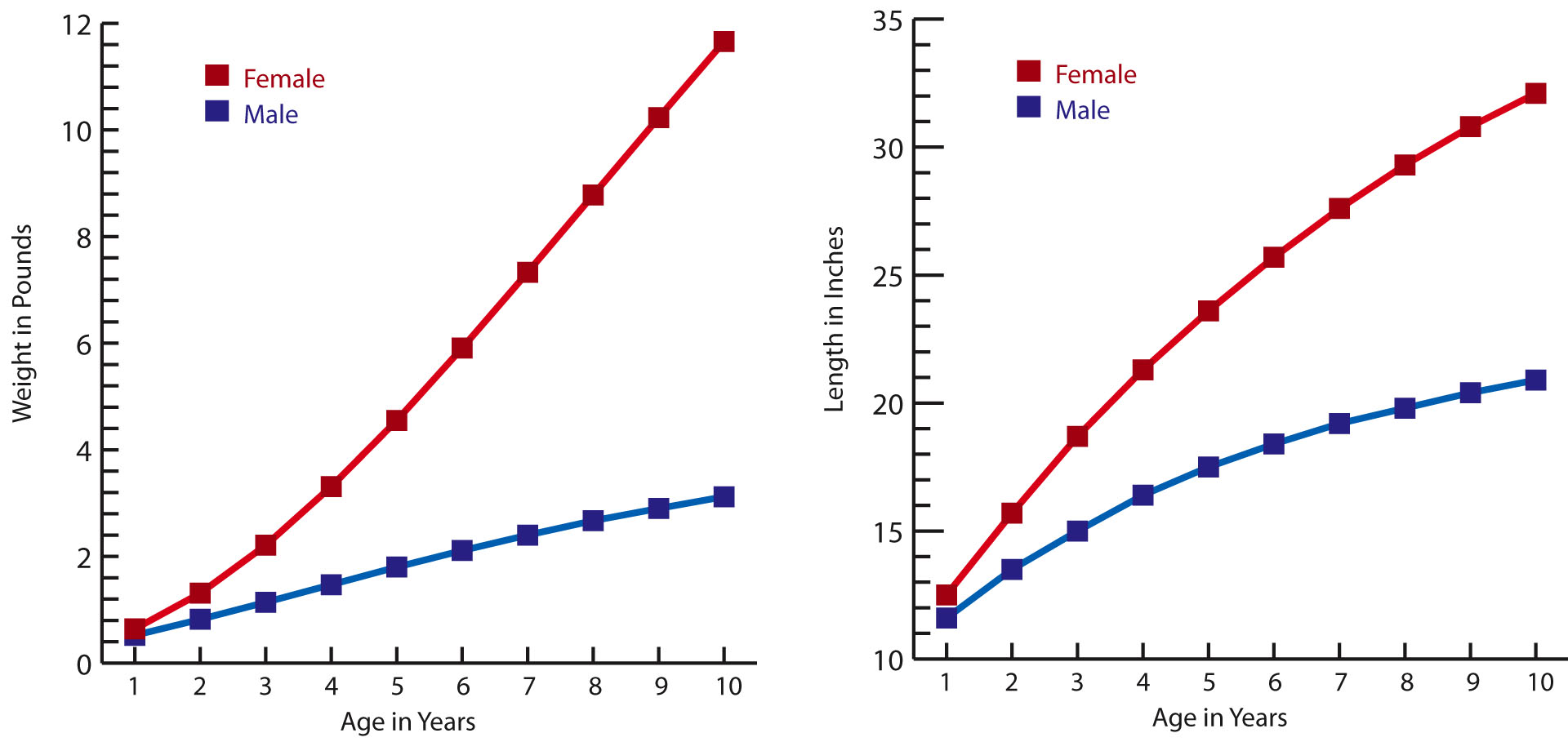Seatrout Spotlight: Life & Leisure

Growth
Spotted seatrout spawn at night from April to September, usually in coastal bays, estuaries, and lagoons. They prefer shallow grassy areas where eggs and young have protective cover. Newly hatched larvae are only about 1.5mm long. That's smaller than that pesky sugar ant on your counter! They grow fastest in their first year, though, and by the time they're a year old, they're 10-12 inches and half a pound (1). A one-year old, ten-inch seatrout is 170 times longer than it was as a newly hatched larva. If a twenty-inch newborn human grew that much in his first year, he'd be 283 feet tall!
Growth begins to gradually slow as the fish ages, so by the time it reaches its ninth or tenth year (which is the average lifespan for spotted seatrout), it may only be growing half an inch per year. Their growth is also temperature-dependent; seatrout will grow least during the coldest time of year because of reduced metabolism and feeding. Females grow faster and live longer than males, though both are sexually mature by two years of age (2).
The age of any bony fish, including seatrout, can be determined by counting the rings on the bony plate behind the brain, called an ear stone or otolith. Similar to tree rings, these growth rings reflect the conditions in which they grew, a "permanent historical record...of the environmental conditions" of that particular fish's estuary (3). The maximum size seatrout can reach is a little over three feet and about 17.4 pounds; maxiumum age about 18 years (2).
The graphs show average size/weight ratios by year.
Feeding
Spotted seatrout are "opportunistic carnivores," meaning they'll pretty much eat anything made of meat that doesn't eat them. Tiny larvae trout eat mostly zooplankton and each other (now that's real sibling rivalry!). Juveniles' diets consist mostly of very small shrimp. Young adults and adults eat shrimp, other fish, and a variety of invertebrates. The 'other fish' menu includes, but is not limited to, anchovies, pinfish, mullet, menhaden, snapper, gobies, sheepshead, toadfish, and of course, smaller spotted seatrout (5). And you can count on younger trout to be eating almost all the time, day or night, kind of like teenagers.
Of course, seatrout aren't the only fish in the bays dining off that same menu. They have to share their restaurant space with other local species, several of which are likely to order the seatrout special for their dinner. The most significant of these predators are, depending on the area, sharks, striped bass, Atlantic croaker, tarpon, barracuda, and magazine editors... (6)
Demographics
I'd like to focus briefly on the average income, education, and other demographics particular to age class of the spotted seatrout. What? Oh, apparently the specks have been a bit lax on reporting this information in their census... Well, fortunately, there are other relevant percentages available: ninety-three percent of spotted seatrout in Texas are less than three years old. Yes, the college voters really have an impact on this population (though trout off the Florida coast are trying to restrict voting rights by length, evidently to target the two-year age class). Typically, Two-year-old females are 15.7 inches; three-years are 18.7 inches; and four-years are 21.3 inches. Two- to four-year-old females contribute most to annual reproduction. Just how much? These three age classes tend to weigh between one and four pounds, and a single one-pound female can produce 2.5 million eggs per year. Since there are no distinct populations among Texas spotted seatrout (they're a rather social group), these demographics are applicable to all Texas specks (7).
Unfortunately, the spotted seatrout population is in decline over the mid-Texas coast. Though they can tolerate changing salinities to some degree, they can't adapt fast enough to the deterioration of coastal waters due to urbanization, pollution, dredging, overfishing, and other human activities (5). So practice your CPR! Some fishy first aid is always handy to know.
Stay tuned next month for a spotlight on seatrout reproduction!
Footnotes
(1) "Life History of the Seatrout," St. Petersburg Times, 1 March 2011 <http://gallery.pictopia.com/tampabay/gallery/89412/photo/8453027/?o=12>.
(2) K. Hill, "Species Name: Cynoscion nebulosus," Smithsonian Marine Station, 2 March 2011 <http://www.sms.si.edu/irlspec/cynosc_nebulo.htm>.
(3) Frank J. Mazzotti, Leonard G. Pearlstine, Tomma Barnes, Stephen A. Bortone, Kevin Chartier, Alicia M. Weinstein, and Donald DeAngelis, "Stressor Response Model for the Spotted Sea Trout, Cynoscion nebulosus" (Wildlife Ecology & Conservation Dept: University of Florida, 2008) 4.
(4) Norman Boyd via Bob Colura, "Texas female [and male] spotted seatrout total lengths [and weights] calculated from von Bertalanffy growth equation," Email interview, 3 March 2011.
(5) Darlene Johnson, "Species Profiles: Life Histories and Environmental Requirements of Coastal Fishes and Invertebrates - Spotted Sea Trout" (National Wetlands Research Center: Louisiana, 1986) 1, 4-6, 11-12.
(6) "Spotted Seatrout (Cynoscion nebulosus)," Texas Parks & Wildlife, 1 March 2011 <http://www.tpwd.state.tx.us/huntwild/wild/species/strout/>.
(7) Britt Bumguardner, "Female Spotted Seatrout Growth," Email interview, 9 March 2011.
